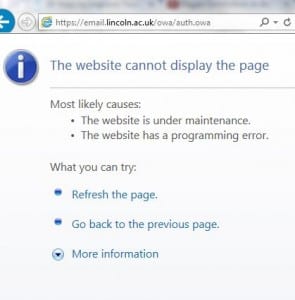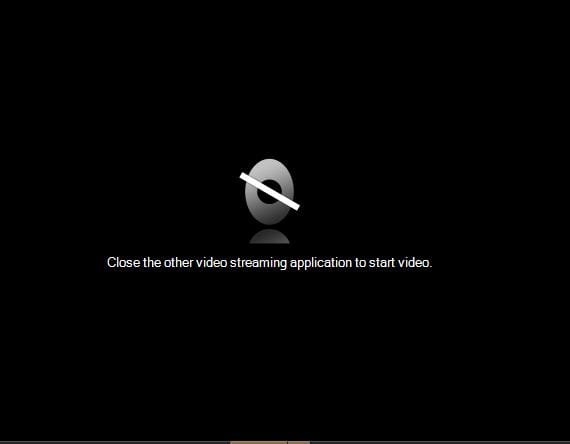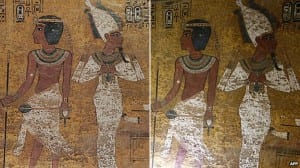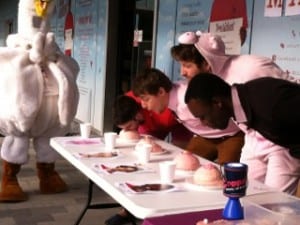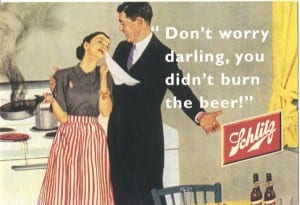Following my confession on the breakdown of my relationship with technology, these are the messages Web Outlook are giving me this morning.
It seems to have broke in the night although it’s probably my laptop. The most common response from colleagues is a variation on one of the themes below:
- I’ve never seen that error message before.
- It’s working ok for me.
- It must be you.
- Have you checked your leads?
- err nerr? you got a right ‘ull accent!
When you’re disconnected you realise the enormity of your net affair. How it affects every thing. This is only a partial break; not like when the network’s down and there’s nothing to do but tidy desks or wash up. Looking at the piles of unread papers on my floor, I could probably do with a few days network-free. But am careful what I wish for.
I’ve mobile options but not everyone has. Last week a colleague was surprised to find three students in their class were dependent on campus computers for internet access. The TELEDA Induction forum contains references to not wanting smart phones, fearing work/life balances would blur. Some make a point not to connect evenings and weekends. Others find devious means to send sneaky email on Saturdays while for many Sunday evening is the new Monday morning. The time of an email reveals the owls or early birds. Colleagues stay up late, get up early, some seem not to go to bed at all. How many times do you check your mobile phone? Is it the first or last thing when you get up in the morning? Do you take your phone to bed with you?
Opinion is divided. Some say it’s professional to keep a permanent eye on email, others want a work/life divide which is a sacrosanct. Like all digital literacies there’s no ‘one size fits all’ model; everyone needs to decide for themselves the most appropriate management of email or social media used for work purposes. There’s also the Blackboard discussion boards. If you’re moderating a group of students participating in an online activity, how often should you contribute? Is tutor input wanted? Can it be a blessing or a curse on the delicate process of encouraging shared practice online?
My email is back. Before catching up, here’s a video I might not have come across otherwise. A useful reminder of the value of virtual communication for sharing what really matters; how in the middle of terrible conditions the human spirit and the power of music survives.
The Landfill Harmonic Orchestra
